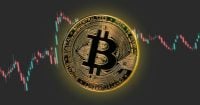Three Blades of the Macro Crisis: Trade Conflicts, Overheated AI, and Political Fragmentation
Author: arndxt
Translation: AididiaoJP, Foresight News
Original Title: Macro Dilemma: Trade Wars, AI Bubbles, and Political Rifts
2025 is a turning point in the economic cycle.
The market is caught in a paradox.
Beneath the surface calm of soft-landing optimism, the global economy is quietly fracturing, unfolding along the lines of trade policy, credit expansion, and technological overreach.
The next global economic misalignment will not stem from a single failure—neither tariffs nor AI debt alone—but from a feedback loop between policy, leverage, and belief.
We are witnessing the late stage of a supercycle, where technology underpins growth, fiscal populism has replaced trade liberalism, and monetary trust is slowly eroding.
Prosperity has not ended, but it has begun to fracture.
This week’s volatility is a microcosm of the bigger picture.
The volatility index saw its biggest surge since April, as concerns over US-China tariffs reignited, only to retreat before the weekend after President Trump confirmed that the proposed 100% import tariff would be “unsustainable.” The stock market breathed a sigh of relief; the S&P 500 stabilized. But this relief is superficial; the deeper narrative is one of exhausted policy tools and overstretched optimism.
The Illusion of Stability
The July US-EU trade agreement was intended to anchor a fragile system.
However, it is now gradually unraveling under the strain of climate regulation disputes and the influence of US protectionism. Washington’s demand for US companies to be exempt from ESG and carbon disclosure rules highlights a widening ideological divide: Europe’s decarbonization vs. America’s deregulation.
Meanwhile, China’s new restrictions on rare earth exports, including a ban on magnets containing trace amounts of Chinese-sourced metals, have exposed the strategic vulnerability of global supply chains. The US response: a threat to impose a 100% tariff on Chinese imports—a political gesture with global consequences. Although this threat was later withdrawn, it reminded markets that trade has become weaponized finance, serving as leverage for domestic sentiment rather than economic rationality.
The World Trade Organization has warned that goods trade will slow sharply by 2026, reflecting a reality: companies are no longer investing in supply chains with confidence, but with contingency plans in mind.
The AI Supercycle
Meanwhile, a second narrative is unfolding in the AI economy—more subtle, but potentially more consequential.
We are crossing from productive expansion into speculative finance, where “vendor financing surges and coverage thins.” Hyperscale enterprises are now leveraging their balance sheets for expansion at a pace that outstrips what revenues can justify—a classic sign of late-cycle exuberance.
This is nothing new. Of the 21 major investment booms since 1790, 18 ended in busts, usually when financing quality deteriorated. Today’s AI capital expenditure frenzy is reminiscent of the late 1990s telecom bubble: real infrastructure gains entangled with credit-driven speculation. Special purpose entities, vendor financing, and structured debt—the tools that once inflated mortgage-backed securities—are returning, this time under the guise of “computing power” and “GPU liquidity.”
The irony? The AI boom is productive, but unevenly distributed. Microsoft is financing expansion through traditional bonds, signaling confidence. CoreWeave is using special purpose entities, signaling stress. Both are expanding, but one is building durable capacity; the other, fragility.
Symptoms of Volatility
The surge in the volatility index reflects deeper market unease: policy uncertainty, concentrated stock leadership, and credit stress beneath the surface of euphoric valuations.
When the Federal Reserve now signals rate cuts amid slowing growth, it is not stimulus—it is risk management. The two-year Treasury yield has fallen to its lowest level since 2022, telling us that investors are pricing in a deflation of confidence, not just interest rates. The market may still cheer every dovish turn, but each rate cut further erodes the illusion that growth is self-sustaining.
Synthesis: Trade, Technology, and Trust
The connecting thread between tariff politics and AI exuberance is trust—or more precisely, the erosion of trust.
Governments no longer trust their trading partners.
Investors no longer trust policy consistency.
Companies no longer trust demand signals, so they overbuild.
The gold price breaking through $4,000 is less about inflation and more about the erosion of this belief: in fiat systems, in globalization, in institutional coordination. It is a hedge, but not against price—instead, against policy entropy.
The Road Ahead
We are entering an era of “fractured prosperity”: a period where nominal growth and market highs coexist with structural fragility:
AI investment is driving GDP, much like railroads did in the 19th century.
Trade protectionism stimulates local production while draining global liquidity.
Financial volatility swings between euphoria and policy panic.
At this stage, risks are accumulating.
Each withdrawn tariff, each capital expenditure announcement, each rate cut extends the cycle but compresses its eventual collapse. The question is not whether the AI or trade bubbles will burst, but how deeply intertwined they have become when they do.
Disclaimer: The content of this article solely reflects the author's opinion and does not represent the platform in any capacity. This article is not intended to serve as a reference for making investment decisions.
You may also like
Whale ‘BitcoinOG’ Boosts $227M Short, Sends $587M BTC to CEXs
ARK Bitcoin Purchase Totals $162.85 Million Amid Crypto Growth
[English Long Tweet] Is USDe Really Safe Enough?
BlackRock acquires $211M worth of Bitcoin

